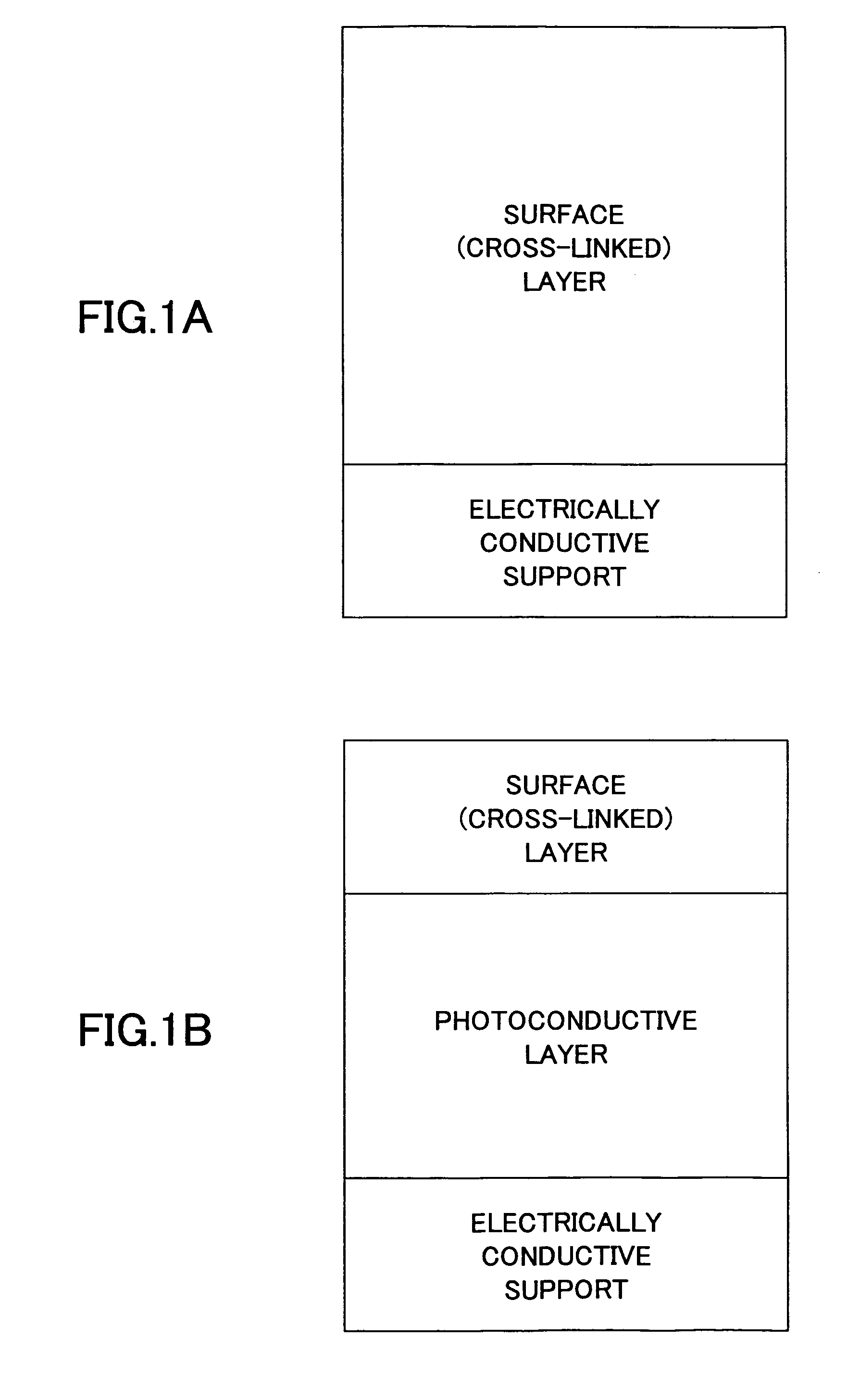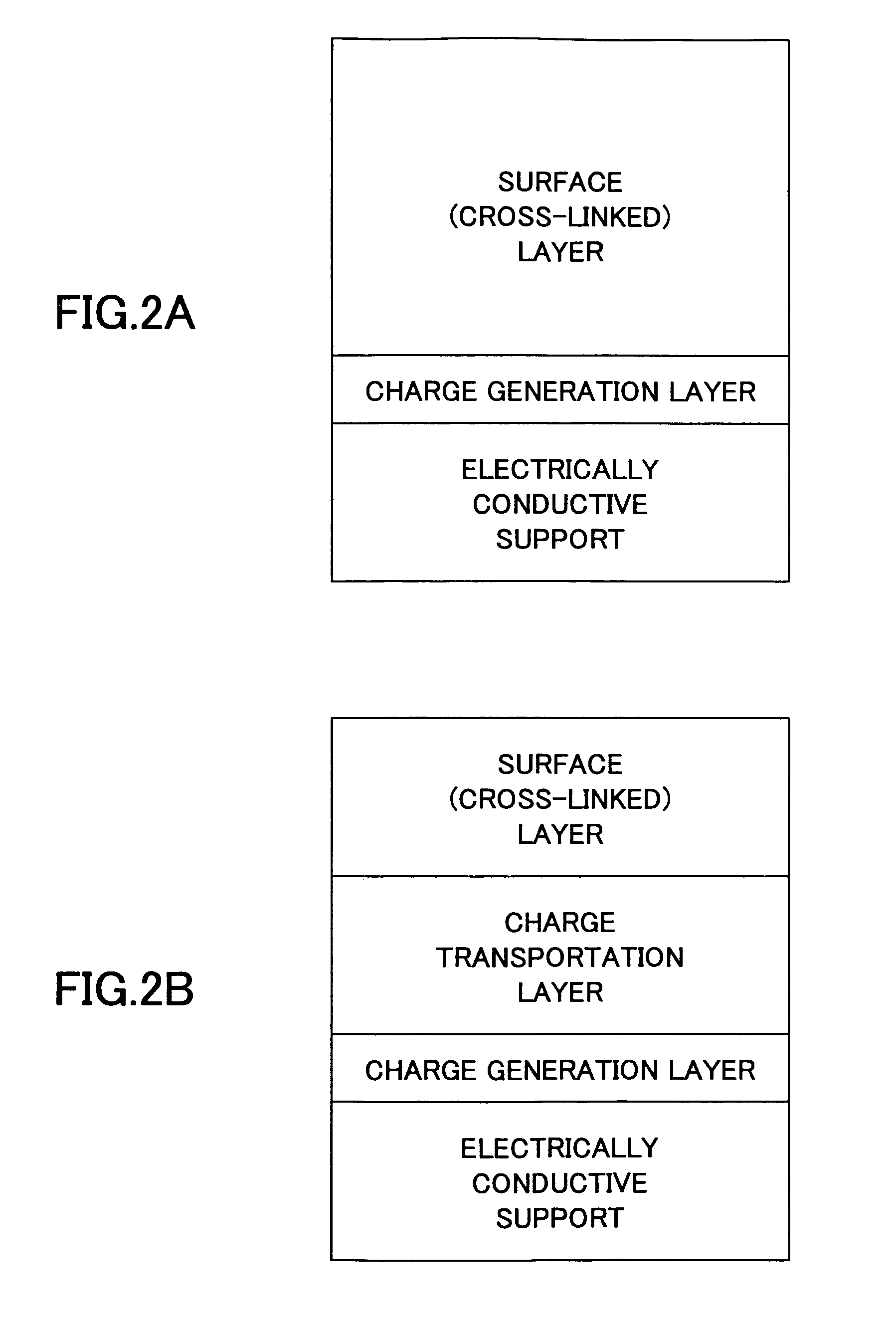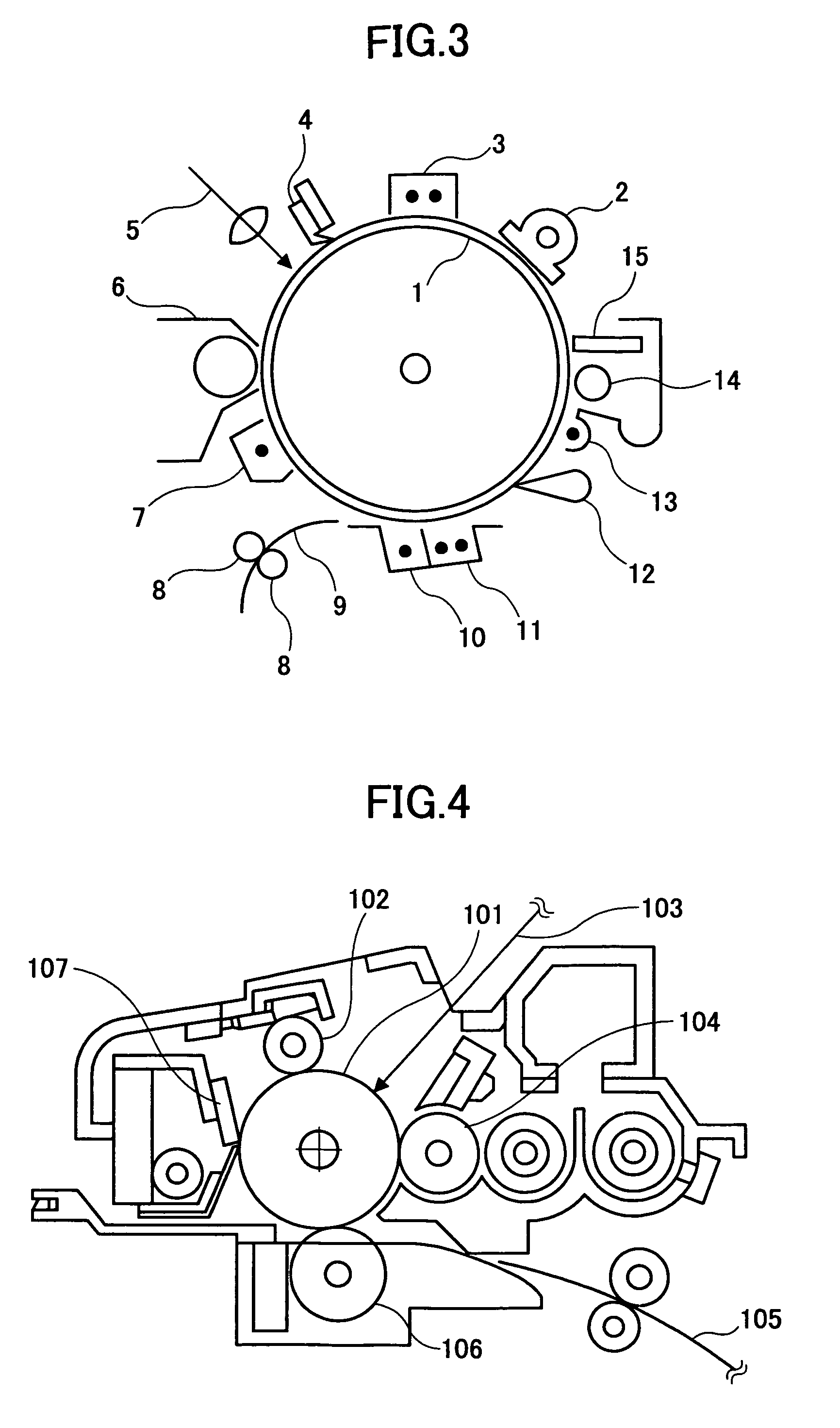Electrophotographic photoconductor, and image formation method, image formation apparatus, and process cartridge for image formation apparatus using the same
a photoconductor and photoconductor technology, applied in the direction of electrographic process, instruments, corona discharge, etc., can solve the problems of mechanical load abrasion, degrade electric characteristics, and lower sensitivity, and achieve excellent service durability, stable electrical characteristics, and high abrasive resistance
- Summary
- Abstract
- Description
- Claims
- Application Information
AI Technical Summary
Benefits of technology
Problems solved by technology
Method used
Image
Examples
example 1-1
[0269]Coating liquid for underlying layer, coating liquid for charge generation layer, and coating liquid for charge transportation layer, which had the following compositions, were applied on an aluminum cylinder in the order by dip coating and dried so as to form 3.5 μm of an underlying layer, 0.2 μm of an charge generation layer, and 23 μm of an charge transportation layer.
[0270]{Coating Liquid for Underlying Layer}
[0271]Alkyd resin: 6 parts
[0272](Beckosol 1307-60-EL produced by DAINIPPON INK AND CHEMICALS, INCORPORATED)
[0273]Melamine resin: 4 parts
[0274](Superbeckamine G-821-60 produced by DAINIPPON INK AND CHEMICALS, INCORPORATED)
[0275]Titanium oxide: 40 parts
[0276](CR-EL: ISHIHARA SANGYO KAISHA, LTD.)
[0277]Ethyl methyl ketone: 50 parts
[0278]{Coating Liquid for Charge Generation Layer}
[0279]Bisazo pigment having the following structure: 2.5 parts
[0280]
[0281]Polyvinyl butyral: 0.5 parts
[0282](XYHL produced by UCC)
[0283]Cyclohexanone: 200 parts
[0284]Ethyl methyl ketone: 80 parts
[...
example 1-2
[0306]An electrophotographic photoconductor was produced similar to example 1-1 except that the free-radical-polymerizable monomer having no charge transporting structure contained in the coating liquid for cross-linked surface layer in example 1-1 was changed to the following compound.
[0307]Caprolactone-modified di-penta-erythritol hexaacrylate
[0308](KAYARAD DPCA-60 produced by NIPPON KAYAKU CO., LTD.)
[0309]
example 1-3
[0310]An electrophotographic photoconductor was produced similar to example 1-1 except that the free-radical-polymerizable monomer having no charge transporting structure contained in the coating liquid for cross-linked surface layer in example 1-1 was changed to the following compound.
[0311]EO-modified di-penta-erythritol hexaacrylate
[0312](KAYARAD DPEA-12 produced by NIPPON KAYAKU CO., LTD.)
[0313]
[0314](Herein, the mean average of n is 12.)
PUM
| Property | Measurement | Unit |
|---|---|---|
| particle size | aaaaa | aaaaa |
| particle size | aaaaa | aaaaa |
| temperature | aaaaa | aaaaa |
Abstract
Description
Claims
Application Information
 Login to View More
Login to View More - R&D
- Intellectual Property
- Life Sciences
- Materials
- Tech Scout
- Unparalleled Data Quality
- Higher Quality Content
- 60% Fewer Hallucinations
Browse by: Latest US Patents, China's latest patents, Technical Efficacy Thesaurus, Application Domain, Technology Topic, Popular Technical Reports.
© 2025 PatSnap. All rights reserved.Legal|Privacy policy|Modern Slavery Act Transparency Statement|Sitemap|About US| Contact US: help@patsnap.com



